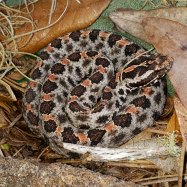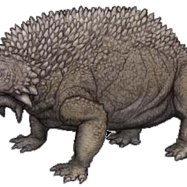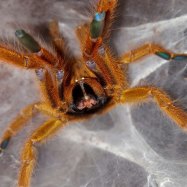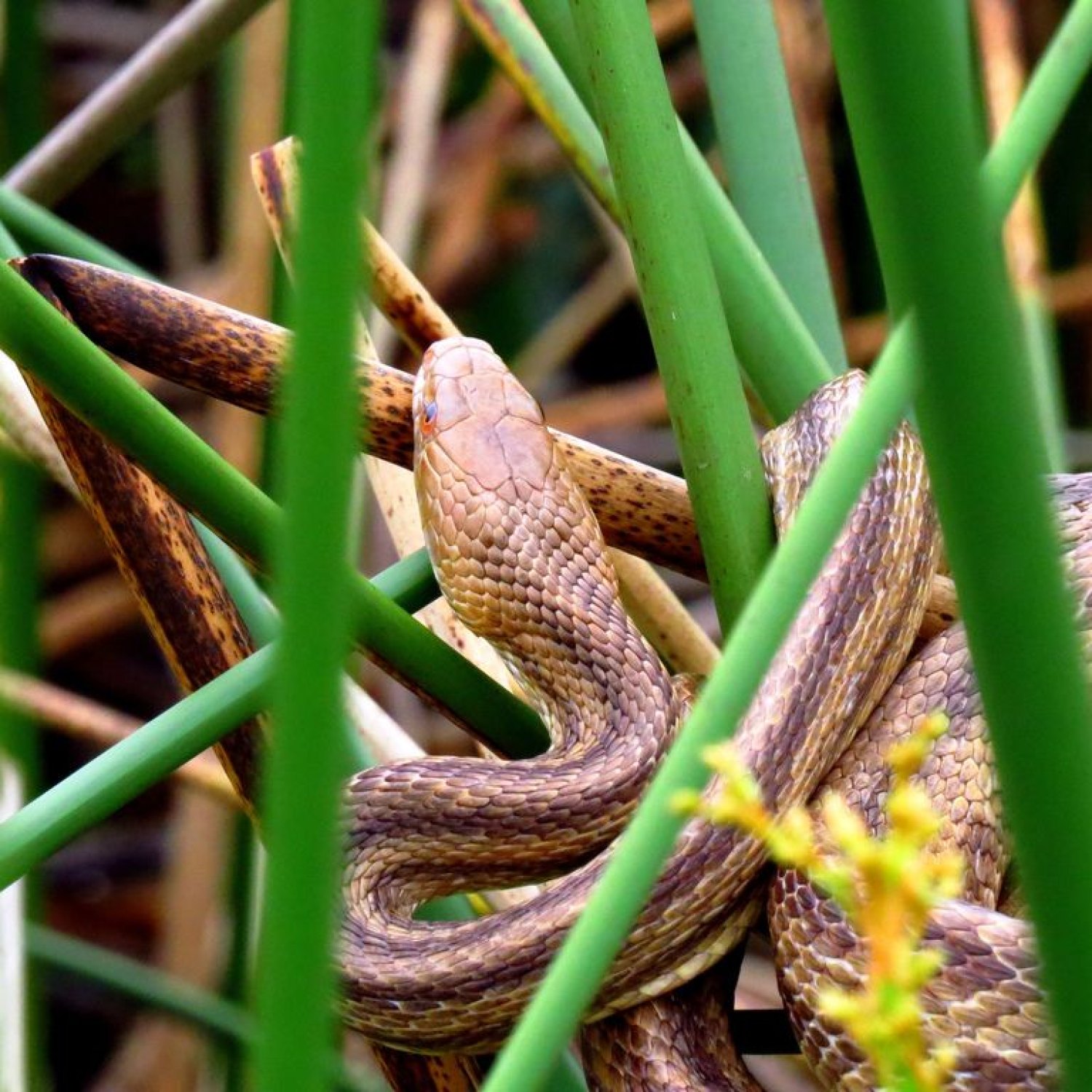
Eastern Rat Snake
3.5 to 6 feet (1 to 1.8 meters)
Meet the Eastern Rat Snake, a common sight in Eastern North America. With a slender and elongated body, this non-venomous reptile can grow up to 6 feet long. They are part of the Colubridae family and are known for their excellent climbing and swimming abilities. Beware, they can give a nasty bite if provoked! #EasternRatSnake #Reptiles #NorthAmerica
Animal Details Summary:
Common Name: Eastern Rat Snake
Kingdom: Animalia
Habitat: Forests, grasslands, marshes, farmlands
Discover the Majestic Eastern Rat Snake: A Marvel of Nature
Nature always has a way of surprising us with its diverse and stunning creatures, and the Eastern Rat Snake is no exception. This reptile, also known as Pantherophis alleghaniensis, is a prime example of nature's ability to create unique and fascinating creatures.From its sleek body shape to its striking coloration and diverse habitats, the Eastern Rat Snake is a true marvel of nature that captivates anyone who comes across it. In this article, we'll explore the various aspects that make this snake species stand out from the rest and discover what makes it such a captivating animal Eastern Rat Snake.
The Kingdom of Animalia: Where the Eastern Rat Snake Belongs
The Eastern Rat Snake, like all living creatures, belongs to a specific classification in the animal kingdom. This species falls under the Kingdom Animalia, which includes all animals on earth. It is also a member of the phylum Chordata, characterized by possessing a spinal cord and a backbone. More specifically, the Eastern Rat Snake belongs to the class Reptilia, which consists of animals with scaly skin and lungs for breathing.The Order and Family of the Eastern Rat Snake
The next level of classification for the Eastern Rat Snake is the order Squamata, which includes all lizards and snakes. This order is also divided into two suborders: Amphisbaenia (worm lizards) and Serpentes (snakes). The Eastern Rat Snake belongs to the Serpentes suborder, which includes all snakes.Finally, within the Serpentes suborder, the Eastern Rat Snake belongs to the family Colubridae, which is the largest snake family in the world. This family includes over two-thirds of all living snake species, making it an incredibly diverse and important group in the animal kingdom English Crested Guinea Pig.
The Diverse Habitat of the Eastern Rat Snake
The Eastern Rat Snake is a highly adaptable species that is found in a variety of habitats throughout its range. These habitats typically include forests, grasslands, marshes, and even farmlands. This versatility allows the Eastern Rat Snake to adapt to different environments and thrive in various conditions, making it a widespread and common species.Within these habitats, Eastern Rat Snakes can often be found living near streams, ponds, and creeks, as these bodies of water provide a source of food and shelter. They are also known to reside in abandoned buildings or rock crevices, making use of human structures for hibernation or shelter.
A Carnivorous Diet: What Do Eastern Rat Snakes Eat?
As a carnivorous species, the Eastern Rat Snake feeds on a variety of prey, including small mammals, birds, reptiles, and amphibians. Its diet primarily consists of rodents, earning them the common name "rat snake." They are also known to feed on young birds and eggs, making them frequent visitors to bird nests.The Eastern Rat Snake is an excellent hunter, using its slender and elongated body shape to swiftly move and capture prey. They possess sharp teeth and powerful jaws, making them efficient predators in their natural habitat.
Geographical Distribution of the Eastern Rat Snake
The Eastern Rat Snake is native to the eastern region of the United States and Canada, hence its name. Its distribution covers a vast range, stretching from parts of Ontario down to Florida and west to Texas. These snakes are also found in the Appalachian Mountains and can be seen up to elevations of around 6,000 feet.The Colors and Patterns of the Eastern Rat Snake
The Eastern Rat Snake is a visually striking species, with a body covered in black or dark brown scales, accented by blotches of yellow or orange. The black coloration is most prominent on the upper half of the body, while the lower half features the yellow or orange blotches, giving the snake a distinct and beautiful appearance.The coloration and patterns of the Eastern Rat Snake can vary slightly between individuals, with some having more prominent yellow or orange blotches. However, these variations do not affect their overall appearance and are still distinguishable as Eastern Rat Snakes.
The Unique Body Shape of the Eastern Rat Snake
One of the most striking features of the Eastern Rat Snake is its slender and elongated body shape. This body shape is typical among snake species and allows them to move swiftly on the ground and through the trees.The Eastern Rat Snake can reach a length of 3.5 to 6 feet (1 to 1.8 meters), with females being slightly larger than males. Their long and slender body shape also allows them to intertwine and climb trees with ease, making them excellent climbers and versatile hunters.
Threats and Conservation Status of the Eastern Rat Snake
Despite their widespread distribution and adaptability, the Eastern Rat Snake faces a few threats to its population. Habitat destruction and fragmentation due to human development is a significant concern for this species. Agriculture, road construction, and urban development all contribute to the fragmentation of their habitats, limiting their movement and access to resources.Additionally, Eastern Rat Snakes often fall victim to human persecution and are sometimes killed out of fear or misconception. However, these snakes are harmless and non-venomous, making them an essential part of their ecosystems.
Currently, the Eastern Rat Snake is designated as a species of least concern on the International Union for Conservation of Nature (IUCN) Red List. It is also protected by state laws in some areas, making it illegal to kill or harm them.
In Conclusion
The Eastern Rat Snake, with its unique features and widespread distribution, is a true wonder of nature. From its diverse habitats and carnivorous diet to its striking coloration and slender body shape, this species is an exciting addition to the animal kingdom.While facing some threats to their population, the Eastern Rat Snake continues to thrive and survive in its natural habitats. As we learn more about this remarkable species, let us appreciate their importance and play a role in protecting their habitats for generations to come.

Eastern Rat Snake
Animal Details Eastern Rat Snake - Scientific Name: Pantherophis alleghaniensis
- Category: Animals E
- Scientific Name: Pantherophis alleghaniensis
- Common Name: Eastern Rat Snake
- Kingdom: Animalia
- Phylum: Chordata
- Class: Reptilia
- Order: Squamata
- Family: Colubridae
- Habitat: Forests, grasslands, marshes, farmlands
- Feeding Method: Carnivorous
- Geographical Distribution: Eastern United States and Canada
- Country of Origin: United States
- Location: Eastern North America
- Animal Coloration: Black or dark brown with blotchy yellow scales
- Body Shape: Slender and elongated
- Length: 3.5 to 6 feet (1 to 1.8 meters)
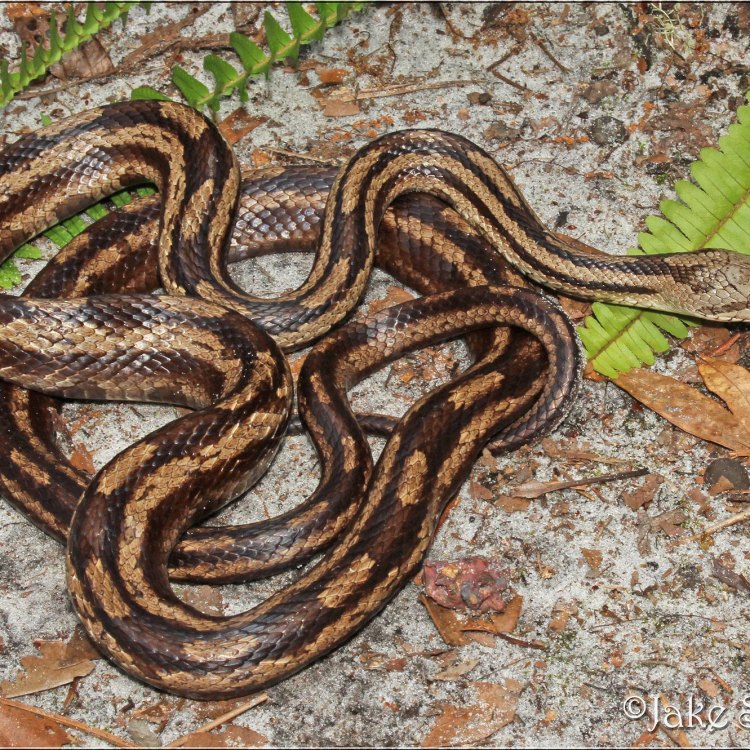
Eastern Rat Snake
- Adult Size: 4 to 6 feet (1.2 to 1.8 meters)
- Average Lifespan: 15 to 20 years
- Reproduction: Sexual
- Reproductive Behavior: Mating season occurs in spring and females lay eggs in early summer
- Sound or Call: Hissing sound
- Migration Pattern: Non-migratory
- Social Groups: Solitary
- Behavior: Diurnal and semi-arboreal
- Threats: Habitat loss, road mortality, predation
- Conservation Status: Least Concern
- Impact on Ecosystem: Controls population of small mammals
- Human Use: Kept as pets and used for educational purposes
- Distinctive Features: Large size, shiny scales, blotchy coloration
- Interesting Facts: Eastern Rat Snakes are excellent climbers and often found in trees
- Predator: Birds of prey, carnivorous mammals
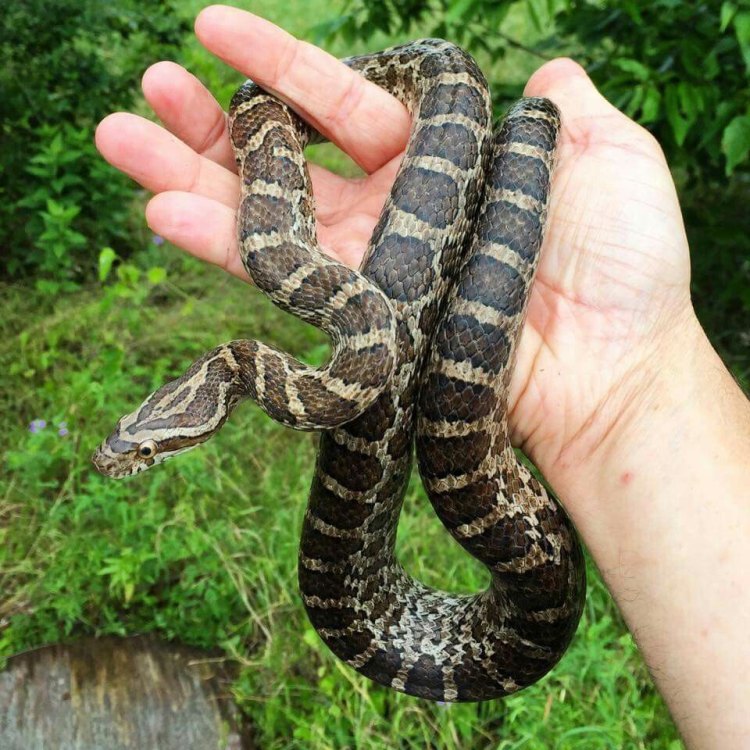
Pantherophis alleghaniensis
The Secretive Life of the Eastern Rat Snake: A Mighty Predator Among Us
The eastern rat snake, also known as the black rat snake, is a fascinating and often misunderstood creature. This non-venomous reptile can be found in a variety of habitats throughout the eastern United States and parts of Canada. With its impressive size, unique reproductive behaviors, and distinctive hissing sound, the eastern rat snake is a species worth exploring.Adult eastern rat snakes typically grow to be 4 to 6 feet in length, with some individuals reaching up to 8 feet PeaceOfAnimals.Com. They have a shiny and smooth appearance, with large scales that give them a sleek and intimidating look. The rat snake's colors can vary from grayish-brown to black, with dark blotches or stripes along their body. Their pattern and coloration can change as they age, making it difficult to identify individuals.
These snakes have an average lifespan of 15 to 20 years, and they reach sexual maturity at around three to four years of age. Unlike many other snake species, the eastern rat snake has a strictly sexual reproductive behavior. This means that they require a male and female to mate and produce offspring. Mating season occurs in the spring when the temperatures start to warm up, and females will lay eggs in early summer.
The mating process of eastern rat snakes is a remarkable sight to witness. Male snakes compete for the attention of female snakes by intertwining their bodies and engaging in a wrestling-like behavior Eskipoo. This ritual can last for hours, with the dominant male ultimately mating with the female. Once fertilization occurs, the female will find a suitable site to lay her eggs, which can range from 12 to 20 eggs in a single clutch. Unlike many snake species, eastern rat snakes do not provide any parental care to their offspring. The eggs will hatch in late summer, and the young snakes will be independent from the moment they emerge from their eggs.
One fascinating fact about eastern rat snakes is their ability to produce a hissing sound. This sound is created by forcing air through their glottis, a structure in their throat used for breathing. This defensive noise is often mistaken for a rattlesnake's rattle, which can deter potential predators. However, unlike rattlesnakes, eastern rat snakes do not possess venom and rely on intimidation and camouflage to protect themselves.
These snakes are diurnal, which means they are most active during the day. They are also semi-arboreal, which means they are skilled at climbing and can often be found in trees or other elevated areas. This unique behavior makes them successful hunters, as they can access prey that many other ground-dwelling snakes cannot.
Eastern rat snakes are solitary creatures and prefer to live alone. They are also non-migratory, meaning that they do not move from one location to another in response to changes in the environment. Instead, they have a home range where they will remain throughout their lives, migrating only briefly during the breeding season.
One of the main threats to the eastern rat snake's survival is habitat loss. As human development expands, many of the snake's preferred habitats, such as forests, fields, and wetlands, are destroyed. This disruption of their natural environment can have a significant impact on their population.
In addition to habitat loss, road mortality is another significant threat to the eastern rat snake. As these snakes often cross roads in search of food or mates, they are at risk of being hit by cars while doing so. This is a common occurrence, as snakes are often perceived as a danger and are often intentionally hit by cars or purposely run over.
Eastern rat snakes also face predation from a variety of species. Birds of prey, such as hawks and eagles, are known predators of these snakes, as they can easily spot them from high up in the sky. Carnivorous mammals, such as foxes, raccoons, and opossums, also pose a threat to these snakes, especially to the young and eggs.
Despite these threats, the eastern rat snake is currently listed as a species of Least Concern on the International Union for Conservation of Nature (IUCN) Red List. This designation means that their population is stable and not facing any significant risk of extinction. However, it is crucial to continue monitoring their population trends and the threats they face to ensure their continued survival.
The presence of eastern rat snakes in an ecosystem plays a crucial role in maintaining a healthy balance. These snakes primarily feed on rodents, including rats and mice, hence their common name. As rodents reproduce rapidly and can cause damage to crops, homes, and other structures, the eastern rat snake plays a vital role in controlling their population. With their impressive size and hunting skills, these snakes help to maintain a natural balance in the ecosystem, keeping rodent populations in check.
Humans also play a role in the lives of eastern rat snakes. Many people keep these snakes as pets, appreciating their unique beauty and fascinating behaviors. Eastern rat snakes are also often used for educational purposes, as they are not venomous and can be easily handled by trained professionals. These snakes are essential in teaching people about the importance of respecting and conserving snake species.
In conclusion, the secretive life of the eastern rat snake is a tale worth discovering. From their impressive size and unique reproductive behaviors to their distinctive hissing sound and important role in controlling rodent populations, these snakes are a mighty predator among us. While they do face threats from habitat loss, road mortality, and predation, they continue to thrive and serve as a vital part of our ecosystem. As humans, it is our responsibility to protect and preserve these remarkable creatures, ensuring their survival for years to come.
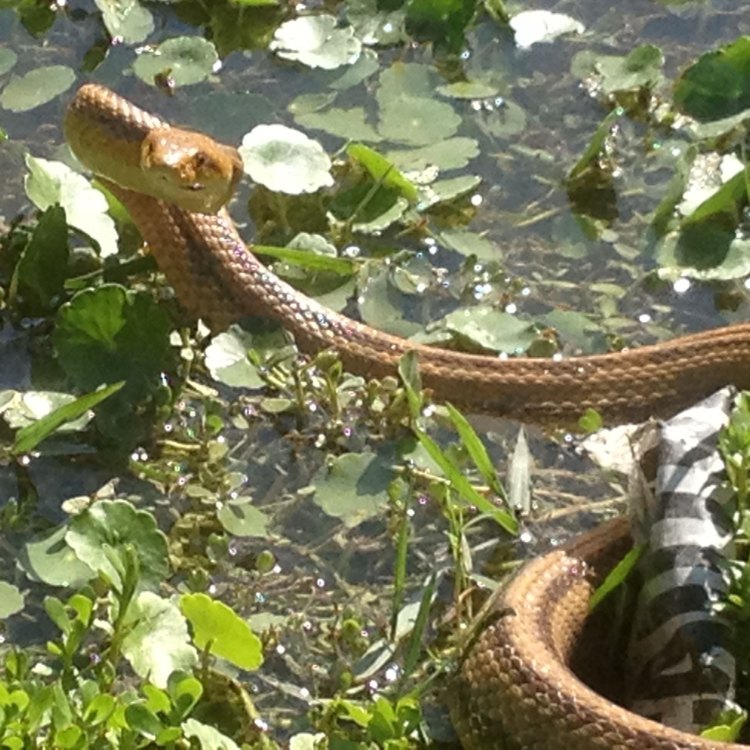
Discover the Majestic Eastern Rat Snake: A Marvel of Nature
Disclaimer: The content provided is for informational purposes only. We cannot guarantee the accuracy of the information on this page 100%. All information provided here may change without prior notice.






